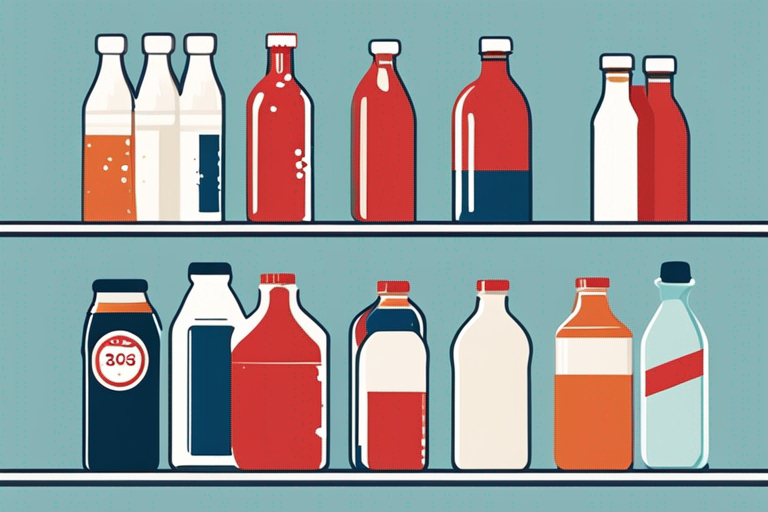
Making Sense of Expiration Dates on Evaporated Milk
Making Sense of Expiration Dates on Evaporated Milk
In the world of food safety, understanding expiration dates is crucial to ensuring the freshness and safety of the products we consume. When it comes to evaporated milk, knowing how to decipher the dates on the packaging can help you make informed decisions about when to use or discard the product. Let's delve into the world of expiration dates on evaporated milk and uncover the facts behind the labels. (Evaporated milk)
The Basics of Expiration Dates
What Do Expiration Dates Mean?
When you pick up a can of evaporated milk at the store, you'll notice it has an expiration date printed on the packaging. But what does this date actually signify? Here's a breakdown:
-
"Best By" Date: This date indicates the manufacturer's recommendation for when the product is at its peak quality. It doesn't necessarily mean the product is unsafe to consume after this date, but the quality may start to decline.
-
Expiration Date: This date is the manufacturer's estimation of when the product may no longer be safe to consume. It's important to pay attention to this date for perishable products like evaporated milk.
Decoding Expiration Dates
Have you ever wondered what those cryptic codes and numbers on the packaging mean? Here's a quick guide to decoding expiration dates on evaporated milk:
-
MM/DD/YYYY: This format signifies the month, day, and year. For example, if you see "10/15/2023" on a can of evaporated milk, it means the product expires on October 15, 2023.
-
Julian Date Code: Some manufacturers use a Julian date code, which is a numerical date code that corresponds to the day of the year. You can use online tools to convert Julian dates to standard calendar dates.
Safety Tips for Handling Evaporated Milk
Proper Storage
Ensuring proper storage of evaporated milk is key to maintaining its quality and safety. Here are some tips to keep in mind:
- Store unopened cans in a cool, dry place away from direct sunlight.
- Once opened, transfer any unused evaporated milk to an airtight container and refrigerate promptly.
- Avoid storing evaporated milk near strong-smelling foods, as it can absorb odors easily.
Signs of Spoilage
It's essential to know how to identify signs of spoilage in evaporated milk to prevent consuming contaminated products. Look out for these indicators:
- Foul odor or off smell
- Unusual color or texture
- Curdling or separation
If you notice any of these signs, it's best to discard the evaporated milk to avoid the risk of foodborne illness.
Extending the Shelf Life of Evaporated Milk
Freezing Tips
Did you know you can freeze evaporated milk to prolong its shelf life? Follow these steps for freezing evaporated milk:
- Transfer the leftover evaporated milk to a freezer-safe container, leaving some room for expansion.
- Label the container with the date to track its freshness.
- Thaw frozen evaporated milk in the refrigerator before use and shake well to recombine any separated components.
By freezing excess evaporated milk, you can prevent waste and always have a supply on hand for your culinary creations.
Conclusion
Understanding expiration dates and proper storage techniques for evaporated milk is essential for maintaining food safety standards in your kitchen. By being mindful of these guidelines, you can enjoy the versatility of evaporated milk in your recipes while prioritizing freshness and quality.
Next time you reach for a can of evaporated milk, remember to check the expiration date, store it correctly, and be vigilant for any signs of spoilage. Your taste buds and your health will thank you for it. (Evaporated milk)
Related Posts
Here are some other articles you might find helpful:
- How Long Does Condensed Milk Last After the Expiration Date?
- The Dangers of Eating Expired Condensed Milk
- Is Evaporated Milk Safe to Use After the Expiration Date?
- Is Sweetened Condensed Milk Good After the Expiration Date?
- Everything You Need to Know About Carnation Evaporated Milk Expiration Date

Authoritative Food Safety References
These agencies and university labs inform every tip and health precaution we publish.
USDA FoodKeeper – Cold Storage Guidelines
Official refrigerator, freezer, and pantry timelines maintained by the U.S. Department of Agriculture.
Visit USDA FoodKeeperFDA Produce Safety Rule & Grower Guidance
Field-to-fridge handling practices that prevent contamination of fruits, vegetables, and leafy greens.
Visit FDA Produce SafetyCDC Foodborne Illness Prevention Hub
Surveillance-backed guidance on pathogens, symptoms, and steps to reduce foodborne illness risk.
Visit CDC Food SafetyUC Davis Postharvest Technology Center
University research detailing optimal storage atmospheres for produce after harvest.
Visit UC Davis PostharvestPenn State Extension – Home Food Preservation & Safety
Peer-reviewed extension bulletins on safe canning, chilling, and reheating practices.
Visit Penn State ExtensionCan evaporated milk be used after the expiration date?
How should evaporated milk be stored to prolong its shelf life?
Can evaporated milk be frozen to extend its shelf life?
How can I tell if evaporated milk has gone bad?
Scan your food directly and get instant safety info using our AI-powered camera feature.